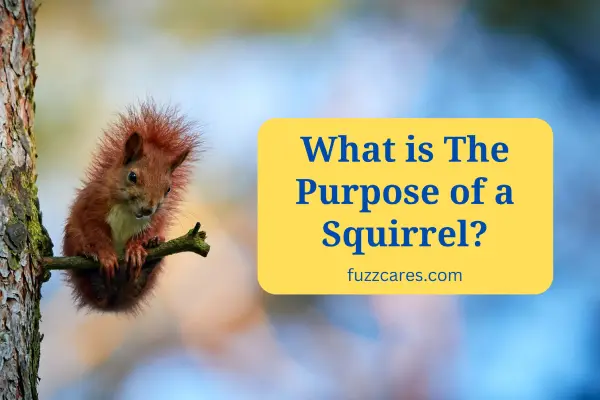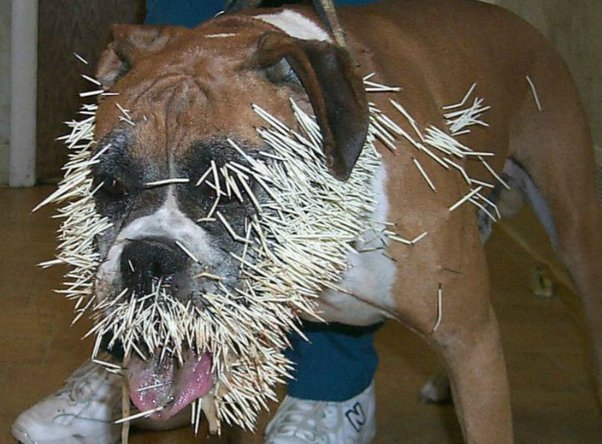Wondering what the purpose of a squirrel is? Well, put simply, these tiny woodland creatures serve a vital role in their ecosystem. But it doesn’t end there!
Squirrels, with their remarkable agility and resourceful nature, have much more to offer than meets the eye. They are nature’s acrobats, tirelessly gathering and burying nuts, contributing to the dispersal and growth of trees.
So, next time you spot a squirrel scurrying about, take a moment to appreciate its vital role in maintaining the delicate balance of nature. These fascinating creatures are a true testament to the wonders of the animal kingdom.
What Purpose Do Squirrels Serve?
Squirrels, those small furry creatures often seen scampering about in parks and gardens, have a seemingly simple and carefree existence. But What role do they play in the ecosystem?
Squirrels serve crucial roles in their ecosystems. They are key seed dispersers, aiding in plant growth and diversity. As prey for various predators, they help maintain the balance of the food chain. Their burrowing activities provide shelter for themselves and other animals while also improving soil health. By consuming fungi and insects, they assist in pest control and overall forest health. In essence, squirrels are integral to ecosystem dynamics and biodiversity.
In this article, we will delve into the fascinating world of squirrels and explore their significance in nature.
Ecological Importance of Squirrels
Squirrels are more than just adorable critters; they serve a vital ecological purpose. Let’s explore some key aspects of their role in the environment:
Seed Dispersal
Squirrels are nature’s gardeners! They play a crucial role in seed dispersal by caching and forgetting about their hidden nut stashes. These forgotten caches often sprout into trees and plants, aiding in forest regeneration and maintaining biodiversity.
Nutrient Cycling
As squirrels consume a variety of nuts, seeds, and fruits, they act as important seed dispersers. This process helps redistribute nutrients from one area to another, promoting the growth and survival of various flora species.
Predation Impact
Squirrels are not only prey but also predators. They help control insect populations by feeding on insects, larvae, and eggs. This predation impact can play a crucial role in maintaining a balance in the ecosystem.
Squirrel Habitat and Adaptations
Understanding a squirrel’s purpose involves recognizing their habitat and the extraordinary adaptations they possess to thrive in their environments:
Arboreal Lifestyle
Squirrels are primarily arboreal creatures, meaning they live in trees. Their nimble bodies, sharp claws, and strong hind limbs enable them to effortlessly navigate and leap through treetops. This arboreal lifestyle helps protect them from predators and provides access to their primary food sources.
Nesting and Shelter
Squirrels build nests called dreys, which are typically made of twigs, leaves, and other materials. These nests serve as shelters for protection against harsh weather conditions and predators. Additionally, squirrels utilize tree cavities and underground burrows as alternative shelter options.
Food Storage
Squirrels are renowned for their ability to hoard food. They carefully collect and store nuts and seeds during times of abundance, creating a reserve to sustain them through lean periods, such as winter. This behavior not only helps individual squirrels survive but also contributes to forest regeneration through seed dispersal.
Species Diversity and Classification with Purposes
Squirrels belong to the family Sciuridae, which includes a diverse range of species worldwide. Let’s explore some notable squirrel species and their unique characteristics:
Eastern Gray Squirrel (Sciurus carolinensis)
The Eastern Gray Squirrel is one of the most common squirrel species found in North America. Known for their gray fur with hints of red, they are highly adaptable and can thrive in urban environments. These squirrels contribute to seed dispersal and serve as a delight to many nature enthusiasts.
Purpose of a Ground Squirrel
Ground squirrels serve as ecosystem engineers. They aerate soil while digging and provide homes for other animals. They help control insect populations and disperse seeds, aiding in plant growth. As prey, they support predator populations. In essence, ground squirrels play a vital role in maintaining ecosystem health and diversity.
Red Squirrel (Sciurus vulgaris)
The Red Squirrel is native to Europe and parts of Asia. With its striking reddish-brown fur, this species is known for its agility and acrobatic behavior. However, despite their charismatic nature, they face various threats, including habitat loss and competition with non-native Eastern Gray Squirrels.
Purpose of a Red Squirrel
Red squirrels serve as seed dispersers, aiding in forest regeneration. They are a vital part of the food chain as prey for predators. Through their activities, like bark gnawing, they influence forest dynamics. In essence, red squirrels play essential roles in maintaining ecosystem health and plant diversity.
Flying Squirrel
Contrary to their name, flying squirrels do not truly fly but glide between trees using a specialized membrane called a patagium. These nocturnal creatures possess adaptations that allow them to move swiftly and silently through the night sky. With their large, expressive eyes, they capture the imagination of many wildlife enthusiasts.
Purpose of a Flying Squirrel
Flying squirrels are nature’s nocturnal acrobats. They soar through the night, reaching food sources like nuts and insects that other squirrels can’t access.
Their nighttime adventures reduce competition with daytime squirrels, and they provide a tasty meal for many forest predators, helping maintain the balance of nature. Plus, as they snack on nuts, they scatter seeds, contributing to new tree growth in the forest.
In a nutshell, flying squirrels add a touch of excitement to the night and play a unique role in keeping the forest thriving.
Interactions and Impact on Humans
Squirrels have long been a source of fascination and enjoyment for humans. However, their interactions with humans can sometimes have both positive and negative implications:
Positive Impact
– Squirrels are often considered charismatic wildlife, captivating people of all ages with their playful antics.
– They can serve as a valuable educational tool for teaching children about nature, ecosystems, and wildlife conservation.
– Squirrels’ foraging activities can contribute to the dispersal of seeds and help maintain healthy plant populations in urban green spaces.
Negative Impact
– In certain situations, squirrels can become pests by damaging gardens or chewing on wires and structures.
– Their natural instinct to hoard food can lead to conflicts with humans when they raid bird feeders or pilfer from storage areas.
– In some cases, squirrel population booms can occur, leading to increased competition for resources and potential damage to ornamental landscapes.
Frequently Asked Questions
What is the purpose of a squirrel?
A squirrel’s purpose in the ecosystem is multifaceted.
How do squirrels contribute to seed dispersal?
Squirrels play a crucial role in seed dispersal by burying nuts and seeds, which they often forget or fail to retrieve. These buried seeds can then germinate and grow into new plants, helping to maintain and diversify forests and other habitats.
Do squirrels help control insect populations?
Yes, squirrels indirectly assist in controlling insect populations. By consuming insects as part of their diet, squirrels help maintain balanced ecological systems, preventing insect outbreaks that may harm plants or disrupt the food chain.
What impact do squirrels have on tree growth and forest regeneration?
Squirrels impact tree growth and forest regeneration in several ways. Firstly, by burying nuts and seeds, they contribute to the dispersion and germination of tree species. Additionally, squirrels prune trees as they gnaw on branches, which can stimulate growth and contribute to the overall health of the tree.
How do squirrels aid in pollination?
While not the primary pollinators, squirrels inadvertently aid in pollination. As they move among flowers in search of nectar or pollen, they inadvertently transfer pollen from one flower to another, contributing to plant reproduction and genetic diversity.
Can squirrels help in maintaining forest ecosystem balance?
Yes, squirrels play a crucial role in maintaining forest ecosystem balance. By participating in seed dispersal, controlling insect populations, aiding in tree growth, and contributing to pollination, squirrels contribute to the overall health and diversity of forests and other habitats.
The purpose of a squirrel is to play a vital role in maintaining ecosystem balance. Squirrels contribute to seed dispersal and tree growth by caching and forgetting nuts. Their behavior helps improve forest diversity and regeneration.
Squirrels serve as a food source for predators, aiding in the natural food chain. Their constant foraging and high energy levels also make them efficient seed predators, controlling plant populations. Overall, the purpose of a squirrel lies in their ecological significance, ensuring the health and sustainability of their habitats.
Conclusion
Although it may be easy to overlook them as mere backyard entertainers, squirrels play a crucial role in maintaining the balance of nature. From seed dispersal to nutrient cycling, their activities contribute to the health and vitality of ecosystems. Understanding the significance of squirrels reminds us of the interconnectedness of all living organisms and the importance of preserving biodiversity.
Whether you encounter squirrels in your backyard or while exploring a local park, take a moment to appreciate these fascinating creatures and the purpose they serve in the grand tapestry of life.

🐾 I’m Marquis, an animal enthusiast 🦁🐯 with a passion for both wild and home animal care. In the wild, I’ve studied majestic species like 🦍🐅, collaborating with conservationists. At home, I’m all about fostering loving environments for pets 🐶🐱🐦, with hands-on experience and shelter volunteering.




Leave a Reply